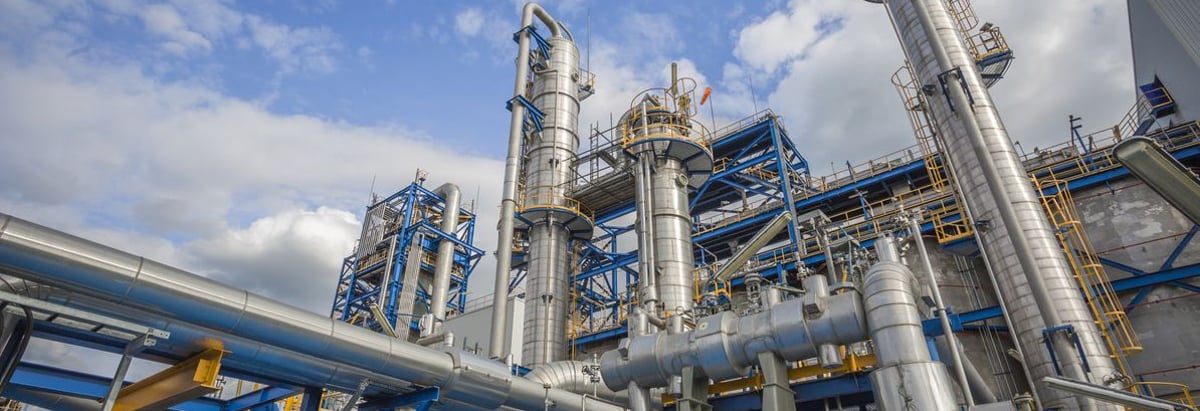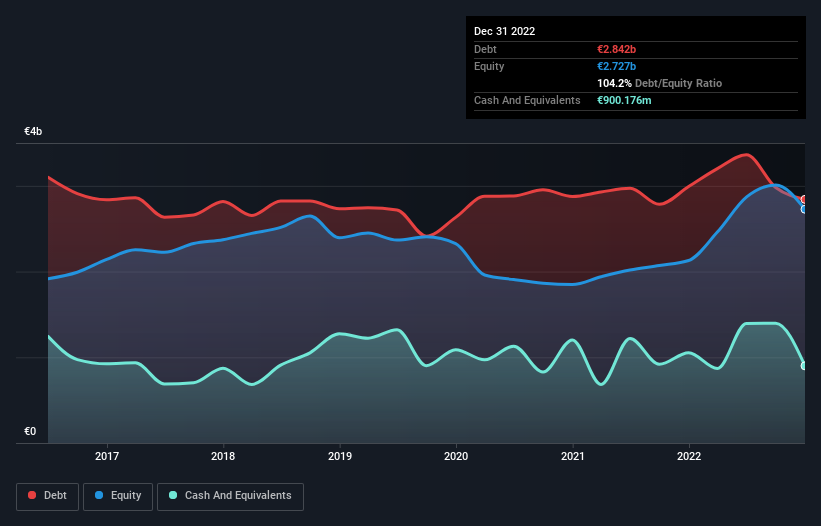
Warren Buffett famously said, 'Volatility is far from synonymous with risk.' When we think about how risky a company is, we always like to look at its use of debt, since debt overload can lead to ruin. We note that HELLENiQ ENERGY Holdings S.A. (ATH:ELPE) does have debt on its balance sheet. But the real question is whether this debt is making the company risky.
When Is Debt Dangerous?
Debt is a tool to help businesses grow, but if a business is incapable of paying off its lenders, then it exists at their mercy. If things get really bad, the lenders can take control of the business. However, a more common (but still painful) scenario is that it has to raise new equity capital at a low price, thus permanently diluting shareholders. Of course, debt can be an important tool in businesses, particularly capital heavy businesses. When we examine debt levels, we first consider both cash and debt levels, together.
View our latest analysis for HELLENiQ ENERGY Holdings
What Is HELLENiQ ENERGY Holdings's Net Debt?
You can click the graphic below for the historical numbers, but it shows that HELLENiQ ENERGY Holdings had €2.84b of debt in December 2022, down from €2.99b, one year before. However, because it has a cash reserve of €900.2m, its net debt is less, at about €1.94b.

A Look At HELLENiQ ENERGY Holdings' Liabilities
Zooming in on the latest balance sheet data, we can see that HELLENiQ ENERGY Holdings had liabilities of €3.79b due within 12 months and liabilities of €2.05b due beyond that. On the other hand, it had cash of €900.2m and €738.0m worth of receivables due within a year. So it has liabilities totalling €4.20b more than its cash and near-term receivables, combined.
This deficit casts a shadow over the €2.26b company, like a colossus towering over mere mortals. So we definitely think shareholders need to watch this one closely. After all, HELLENiQ ENERGY Holdings would likely require a major re-capitalisation if it had to pay its creditors today.
We use two main ratios to inform us about debt levels relative to earnings. The first is net debt divided by earnings before interest, tax, depreciation, and amortization (EBITDA), while the second is how many times its earnings before interest and tax (EBIT) covers its interest expense (or its interest cover, for short). The advantage of this approach is that we take into account both the absolute quantum of debt (with net debt to EBITDA) and the actual interest expenses associated with that debt (with its interest cover ratio).
HELLENiQ ENERGY Holdings has a low net debt to EBITDA ratio of only 1.2. And its EBIT covers its interest expense a whopping 14.4 times over. So we're pretty relaxed about its super-conservative use of debt. Better yet, HELLENiQ ENERGY Holdings grew its EBIT by 228% last year, which is an impressive improvement. If maintained that growth will make the debt even more manageable in the years ahead. The balance sheet is clearly the area to focus on when you are analysing debt. But it is future earnings, more than anything, that will determine HELLENiQ ENERGY Holdings's ability to maintain a healthy balance sheet going forward. So if you want to see what the professionals think, you might find this free report on analyst profit forecasts to be interesting.
But our final consideration is also important, because a company cannot pay debt with paper profits; it needs cold hard cash. So the logical step is to look at the proportion of that EBIT that is matched by actual free cash flow. Considering the last two years, HELLENiQ ENERGY Holdings actually recorded a cash outflow, overall. Debt is far more risky for companies with unreliable free cash flow, so shareholders should be hoping that the past expenditure will produce free cash flow in the future.
Our View
We'd go so far as to say HELLENiQ ENERGY Holdings's level of total liabilities was disappointing. But at least it's pretty decent at covering its interest expense with its EBIT; that's encouraging. Once we consider all the factors above, together, it seems to us that HELLENiQ ENERGY Holdings's debt is making it a bit risky. Some people like that sort of risk, but we're mindful of the potential pitfalls, so we'd probably prefer it carry less debt. The balance sheet is clearly the area to focus on when you are analysing debt. But ultimately, every company can contain risks that exist outside of the balance sheet. We've identified 3 warning signs with HELLENiQ ENERGY Holdings (at least 1 which is a bit unpleasant) , and understanding them should be part of your investment process.
If you're interested in investing in businesses that can grow profits without the burden of debt, then check out this free list of growing businesses that have net cash on the balance sheet.
Valuation is complex, but we're here to simplify it.
Discover if HELLENiQ ENERGY Holdings might be undervalued or overvalued with our detailed analysis, featuring fair value estimates, potential risks, dividends, insider trades, and its financial condition.
Access Free AnalysisHave feedback on this article? Concerned about the content? Get in touch with us directly. Alternatively, email editorial-team (at) simplywallst.com.
This article by Simply Wall St is general in nature. We provide commentary based on historical data and analyst forecasts only using an unbiased methodology and our articles are not intended to be financial advice. It does not constitute a recommendation to buy or sell any stock, and does not take account of your objectives, or your financial situation. We aim to bring you long-term focused analysis driven by fundamental data. Note that our analysis may not factor in the latest price-sensitive company announcements or qualitative material. Simply Wall St has no position in any stocks mentioned.
About ATSE:ELPE
HELLENiQ ENERGY Holdings
Operates in the energy sector in Greece, the Southeastern Europe, and the East Mediterranean.
Fair value with moderate growth potential.
Market Insights
Community Narratives




